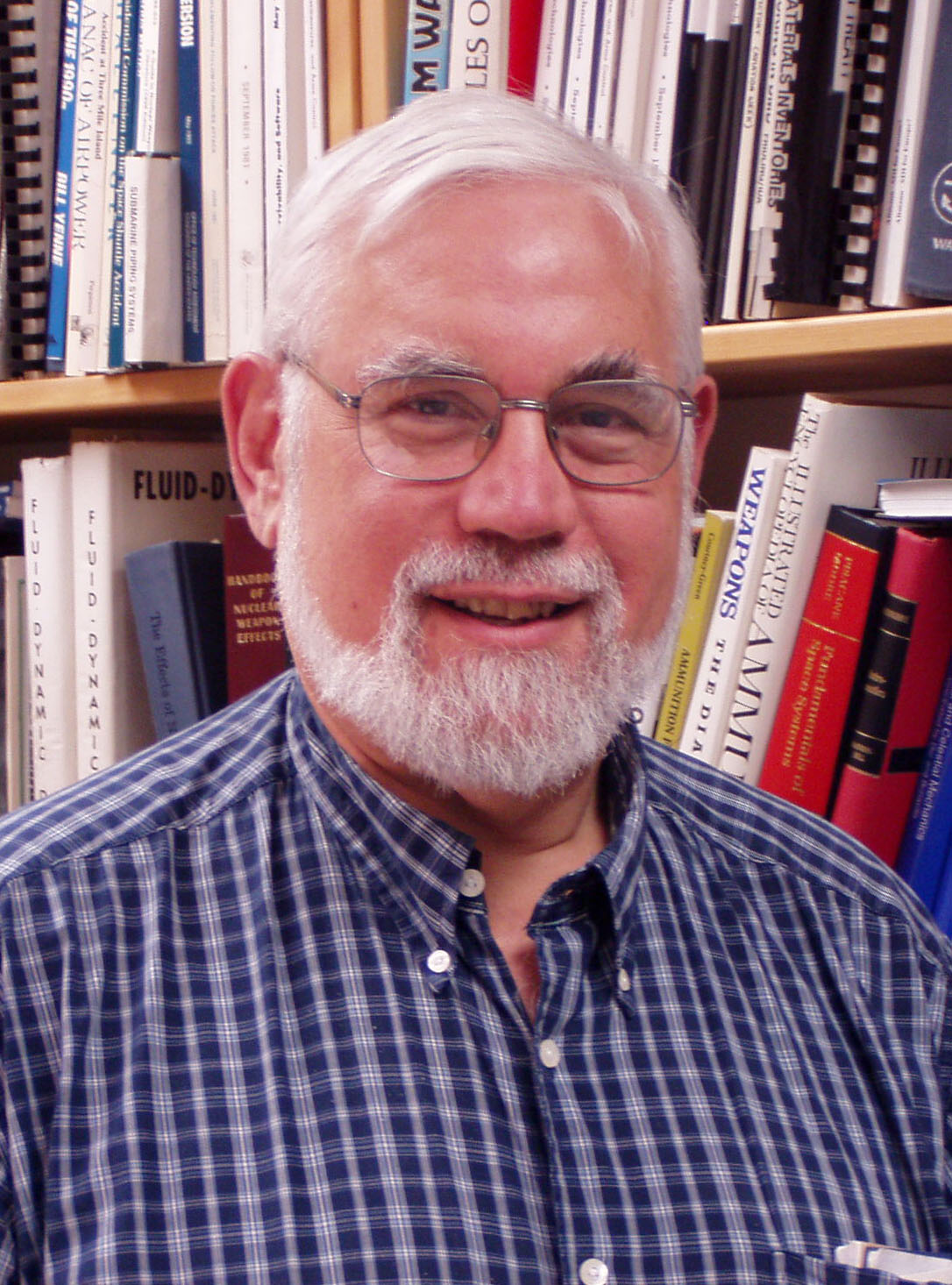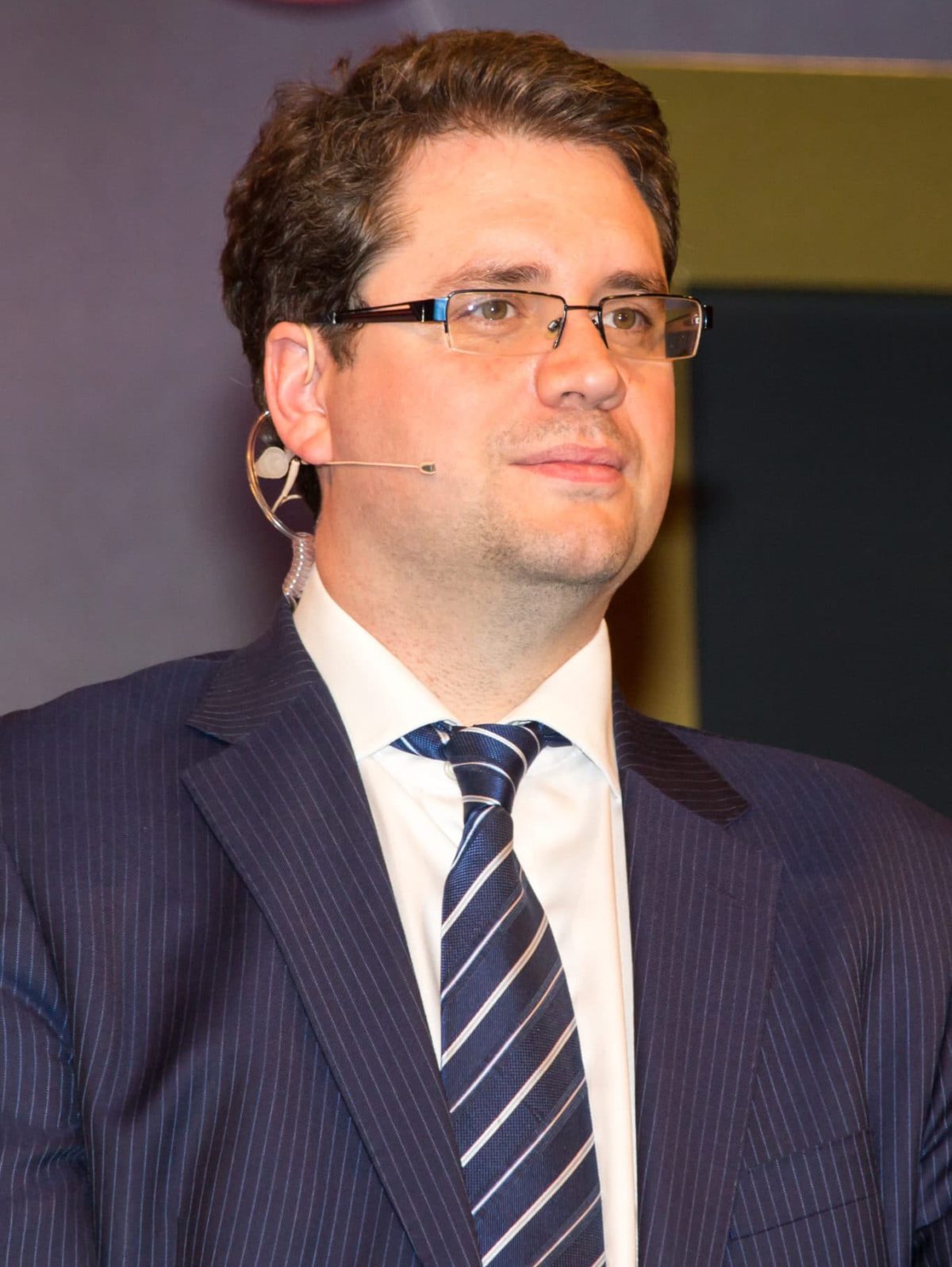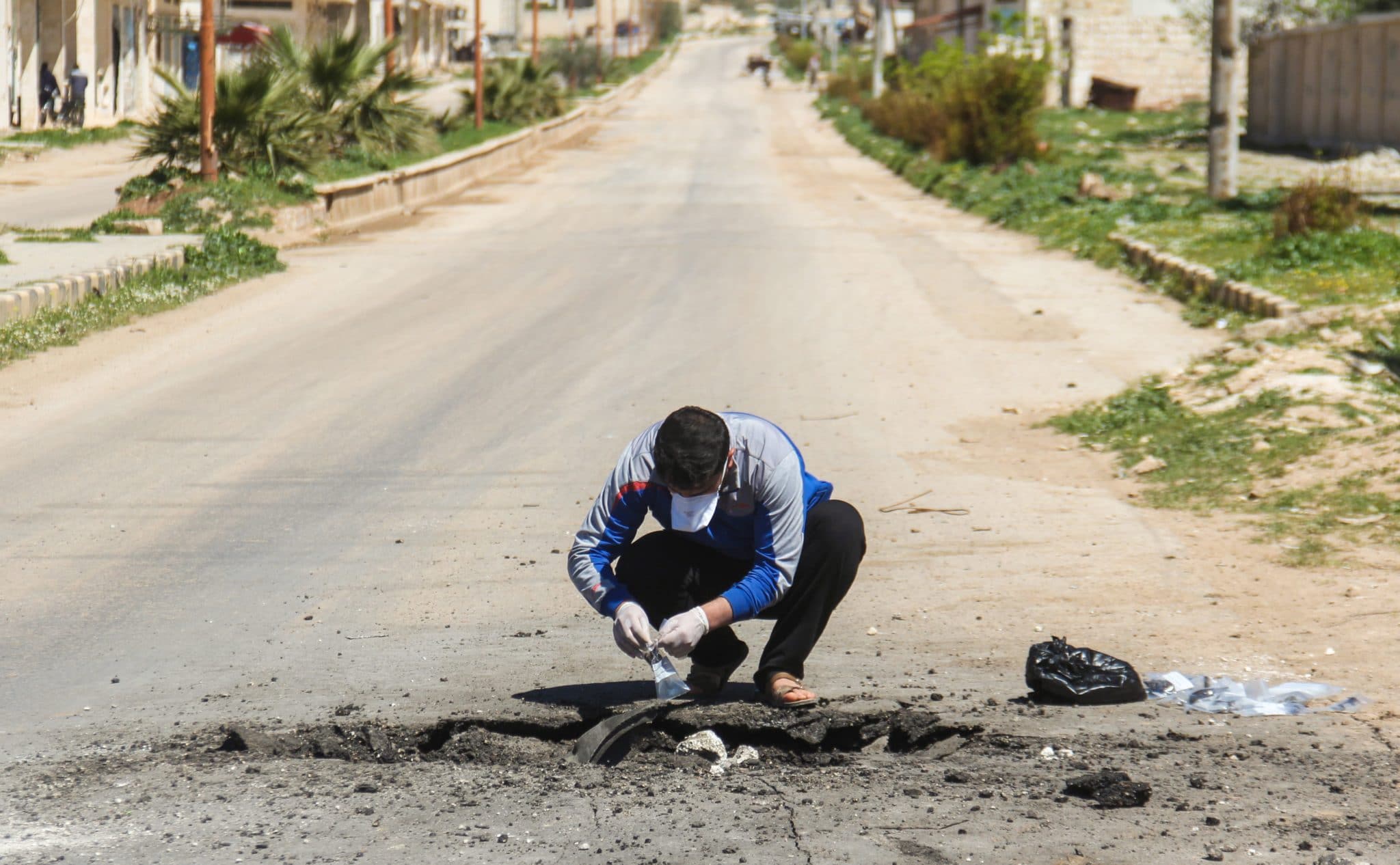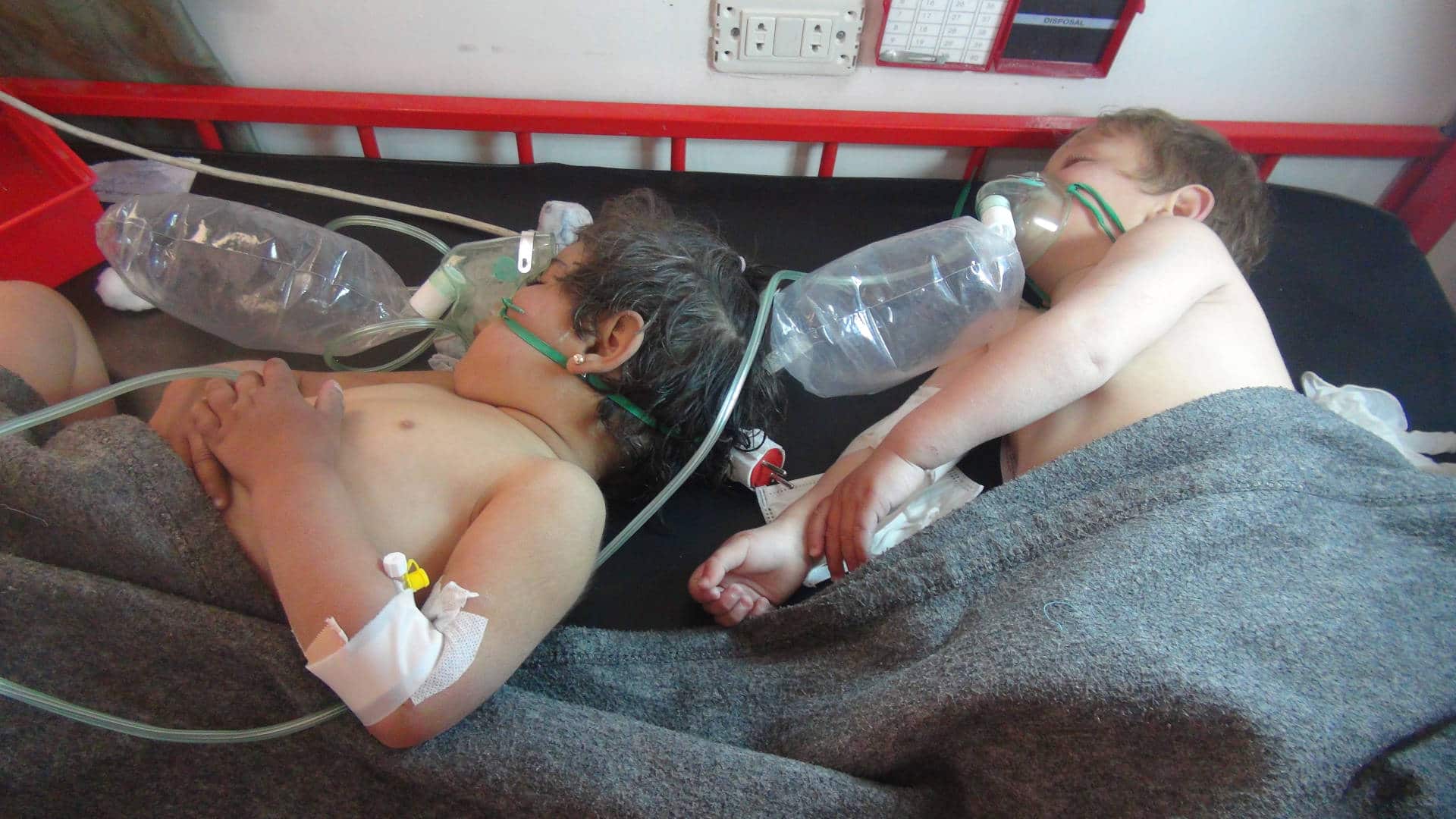Behind a Chemical Attack in Syria, a Lingering Battle Over Blame
On the morning of April 4, 2017, the village of Khan Sheikhoun in northern Syria was struck by a chemical weapons attack. Over the next few days, international news coverage chronicled the human devastation: children struggling to breathe, bodies lying in the streets, families being pulled, lifeless, from their homes. In an April 5 statement, the World Health Organization estimated that at least 70 people had died with hundreds more affected. “These types of weapons are banned by international law,” said Peter Salama, executive director of the WHO Health Emergencies Program, “because they represent intolerable barbarism.”
Three days after the chemical weapons attack, the U.S. military fired dozens of cruise missiles against a Syrian airbase 75 miles south of the village. The White House then released a declassified report detailing the military intelligence that sparked its retaliatory strike on the Syrian regime. Among other things, the report expressed confidence that the regime, under the leadership of President Bashar al-Assad, was responsible for the use of chemical weapons on its own people in Khan Sheikhoun. The report also criticized the Syrian and Russian governments for seeking “to confuse the world community about who is responsible.”
Assad denied responsibility, and in the days following the U.S. airstrike, he suggested that child actors had staged death scenes as part of a plot to justify American military action. The Russian government — a Syrian ally with a track record of disinformation campaigns — blamed the chemical release on opposition fighters in Syria’s ongoing civil war.

Theodore “Ted” Postol has long been a critic of fantastical defense technologies. He still is.
Visual: MIT
Ted Postol, an emeritus professor at the Massachusetts Institute of Technology and an expert in military technology, told Undark that he followed these events and accusations as they appeared in the news. He recalls being immediately alarmed by an early article in The Guardian identifying the chemical as the nerve agent sarin, and attributing the attack to an aerial bomb delivered by the Syrian air force. The article “had the appearance of not being reliable,” he said. The Guardian photographs and description of the Khan Sheikhoun sarin release site didn’t track with the evidence from a confirmed nerve agent attack on rebel-controlled areas in the suburbs of Damascus in 2013, Postol said. He had been involved in a technical analysis of that previous incident, which involved the launch of artillery rockets containing large amounts of sarin.
In the Guardian report, the only evidence of a possible sarin-containing vessel was a small pipe, only a few feet long and less than 5 inches wide. Such a pipe could not have held much sarin, Postol argued. Further, the size and shape of what was identified by The Guardian as the bomb crater seemed to contradict the notion that a largescale weapon had been dropped from the air. Postol grew increasingly concerned that the controversy would lead to a regional military confrontation between the U.S. and Russia, and, in time, he went public with his concerns.
What would follow is a still-festering controversy that has engulfed other scientists, journalists, United Nations agencies, a prestigious scientific journal, and even a U.S. Democratic presidential candidate. Along the way, Postol and his colleagues have found themselves condemned as unwitting apologists, or even willing propagandists on the side of the villains, when their analyses contested the official narrative of the U.S. and British governments, the Organization for the Prohibition of Chemical Weapons (OPCW) of the United Nations, and investigations by The New York Times and Human Rights Watch.
According to Postol, “if the U.N. sticks by a false story, it will simply further undermine the credibility of international law,” including the Chemical Weapons Convention, which entered into force in 1997 and was designed to prevent attacks like the one that brought so much devastation to Khan Sheikhoun.
But other scientists and some investigative reporters familiar with the Khan Sheikhoun attack say that the criticisms of Postol’s analysis are well deserved. The work of Postol and his team, these critics say, is not just flawed, it could also provide political cover for the governments of Russia and Syria, as well as others who would deny war crimes. “The Syrian government has a long history of chemical weapons use, and the OPCW’s conclusions concur with a wealth of witness testimony,” wrote George Monbiot, a Guardian columnist, in support of the U.N. agency’s investigation in November 2017. “But a major propaganda effort has sought to discredit such testimony, and characterize the atrocity as a ‘false-flag attack.’”
Whatever the merits of each of the competing narratives, the bitter and ongoing fracas has turned the Khan Sheikhoun incident into something of a case study in what happens when politics and science intertwine and clash — and when scientists themselves disagree in the shadow of unfathomable geopolitical stakes.
Applied mathematician Goong Chen of Texas A&M University, an expert in conducting supercomputer simulations of complex mechanical phenomena, said he first heard about Khan Sheikhoun when his son sent him an email that included a link to an article summarizing Postol’s claims that the available evidence did not point to an air attack by the Syrian government. The nascent controversy seemed a natural challenge for Chen, who had extensive experience with mathematical modeling of high-speed collision and impact phenomena.
Chen assembled his team of mathematicians and computer scientists and discussed the various scenarios being put forward for how the chemical attack might have taken place. Perhaps some of those scenarios could be simulated by computational and mathematical modeling on the supercomputer, Chen recalled telling the group.
Chen and his team had previously analyzed aircraft crashes such as the 2015 Germanwings incident, where a troubled pilot deliberately crashed the plane in the French Alps, as well as the 2014 disappearance of Malaysian Airlines Flight 370. “We had accumulated some good amount of high-speed impact experience,” Chen said, “but dealing with explosives, with munitions, that was a new experience.” The team spent a couple of months just trying to figure out what kind of software to use. (They finally settled on a software package called LS-DYNA, originally developed at Lawrence Livermore National Laboratory for nuclear weapons impact simulations.)
Chen sent videos of preliminary simulations to Postol, who then traveled to Texas to meet with Chen and his research group. All decided that the Khan Sheikhoun incident offered a unique problem well-suited to analysis by Chen’s techniques. As he embarked upon his supercomputer runs, Chen wasn’t considering anything beyond the technical aspects. “During the initial period, I never thought about political implications or consequences,” he said. “I was trying to find some scientific outcomes that could support or conversely deny Ted Postol’s theories.”

Eliot Higgins, founder of the open-source investigative journalism publication Bellingcat.
Visual: Superbass / Wikimedia
Postol had already discussed his concerns with several other colleagues and contacts, including investigative reporter Seymour Hersh, who also questioned the official U.S. justification for its air strikes. But as the U.N.’s chemical weapons division was conducting its own official inquiry into the Khan Sheikhoun attack, Postol’s conclusions came under sharp criticism from other quarters, including the online investigative journalism website Bellingcat, founded by the British journalist Eliot Higgins in 2014. According to its website, Bellingcat specializes in “open source and social media investigation to probe a variety of subjects — from Mexican drug lords and crimes against humanity, to tracking the use of chemical weapons and conflicts worldwide.” Most recently, Bellingcat was instrumental in debunking the Iranian government’s narrative about the Ukraine Airlines flight that crashed outside Tehran in January.
Postol and Bellingcat had previously clashed over his analysis of the 2013 sarin nerve gas attack in Damascus, and in an interview with Undark, Higgins described Postol as “incredibly popular among the online community that was heavily into denying chemical weapon attacks in Syria.” After the attack in Khan Sheikhoun, Higgins said, that community “leapt on the various documents” that Postol sent out.
“That community, I think it’s fair to say, hates me,” said Higgins, “and thinks I’m part of a vast conspiracy against the Syrian government.” As the Khan Sheikhoun story continued to develop, Higgins and Bellingcat would emerge as Postol’s bête noire, publishing a withering critique of Postol’s theories not long after the professor had gone public with his own criticism of the official White House report.
In October 2017, the OPCW issued the final report of its investigation, concluding that the crater in Khan Sheikhoun was most likely “caused by a heavy object travelling at high velocity, such as an aerial bomb with a small explosive charge.” According to the report, the OPCW had examined the contention — put forth early on by Postol and others — that the bomb crater had been caused by an improvised explosive device, not an aerial bomb. “While that possibility could not be completely ruled out, the experts determined that that scenario was less likely,” the report stated.
For his part, Postol contends that the forensic evidence in the OPCW report not only contradicts its own findings, it also raises strong suspicions that some of the evidence — such as a dead goat near the crater supposedly killed by sarin — may have been planted by one or more of the rebel factions controlling the area, in order to direct blame toward the Assad regime. According to Postol, the chemical weapons attack was more likely to have been perpetrated by a rebel group than by the Syrian government.

In August 2018, Chen, Postol, and the rest of their team completed their computer simulations and analysis, which suggested that the crater had been made not by an aerial bomb or an IED, but by a vehicle-launched 122-millimeter rocket — a type of weapon whose components are readily available for purchase around the world. The team submitted a paper, with Chen as lead author, to Science & Global Security (S&GS), an academic journal based at Princeton University for which Postol then served on the editorial board, and the paper began to slowly wend its way through the peer review process.
Postol continued to press forward with his criticisms, and in August 2019 the situation became even more politically charged when the Hawaii congresswoman and then-candidate in the Democratic presidential primary Tulsi Gabbard cited Postol’s work on her campaign website, after receiving a pre-publication copy of the journal article. Already under wide scrutiny for her unconventional foreign policy views, which some critics have interpreted as pro-Russian or pro-Syrian, Gabbard’s alignment with Postol’s counter-narrative was promptly taken up by Bellingcat. In a lengthy critique, Higgins wrote that Postol’s and Gabbard’s claims “mirror those used by conspiracy theorists and war crime denialists.”
Such criticisms are nothing new for Postol, who has made something of a career questioning official narratives and conventional wisdom. That predilection has exposed him many times to accusations of being a crackpot, a conspiracy theorist, or more ominously, a willing supporter of dictators and autocrats, including Assad. Postol’s response to such charges is always that he simply follows the science wherever it leads, even if sometimes it leads to dark places and unsavory conclusions — and even if some people don’t like it. That attitude has generally served him well in the past, whether criticizing the effectiveness of the Patriot missile system used in the first Gulf War, the capabilities of antiballistic missile defense systems, or the administrative practices of his own institution, MIT.
Still, the Khan Sheikhoun matter has proven to be perhaps even a bigger and more explosive issue. “All we’re saying is, look, [Assad is] a criminal, but he didn’t do this criminal act,” Postol said.
Higgins, on the other hand, notes that Postol has falsely accused Bellingcat of claiming that Postol’s colleagues were paid off by foreign governments — a claim Postol recanted when challenged about it. “Between obvious errors in his work, his engagement with conspiracy theorists, and false allegations like that, I think Postol has done plenty by himself to discredit himself,” Higgins said.
Whatever the case, Postol and his colleagues are hardly the first to raise concerns about the response of the OPCW to the use of chemical weapons by the Assad regime. As reported recently by the news agency Reuters: “The Syrian war has split the OPCW, once largely a technical organization, along political lines, with Russia and its ally Syria on one side and the United States, France, and Britain on the other.”
IIn early 2019, Science & Global Security had accepted the paper submitted by Chen, Postol, and their colleagues, who spent the following months revising and editing the manuscript. But in September the journal announced that it would suspend publication, citing “a number of issues with the peer review and revision process.” By that point, controversy over both the paper itself and the unusually long delay in its publication was already roiling the scientific community. In a news article published in Science at the time, Postol was quoted saying he was “totally confident” of eventual publication. That confidence wouldn’t last long.
The following month, the editors of S&GS announced that “they cannot now rectify the problems that were identified” with the peer review process and “do not see a viable path to providing an independent, fair, effective, and conclusive blind peer review of this article by this journal.” The editors therefore decided to “return this manuscript to the authors without prejudice and not proceed further with considering it for publication.” The editorial letter underscored the journal’s commitment to informing controversial policy debates with careful technical analysis in order to pinpoint points of scientific agreement. In this particular case, however, the editors expressed doubts that such an outcome was possible.
When scientific papers are rejected by journals, it is generally for reasons of scholarship: inadequate data, poorly constructed arguments, or questions of plagiarism or overt bias. But Chen and Postol say they were stunned to see S&GS first accept their paper, and then reverse that decision without citing any of these standard reasons. “No acceptance is just like rejection,” said Chen. “You must be rejected on technical and scientific grounds. They are not doing it.” Postol noted that the controversy that has flared up in the scientific community over the paper effectively rules out the option of publishing it elsewhere: “This is such a controversial paper now. No one’s going to touch it.”
Science magazine kept the matter in the public eye with a follow-up article attributing the S&GS decision to a “backlash from scientists,” many of whom accuse Postol of pushing conspiracy theories. Jean Pascal Zanders, an independent consultant on chemical and biological weapons, told Science that the manuscript prepared by Postol’s group ignores some of the evidence, such as chemical clues connecting the sarin to a chemical precursor stocked by the Syrian government. In an email interview with Undark, Zanders added that “many of the premises and methodologies used by Postol are flawed. Unless the tests are carried out again based on clear protocols, clarification of prior assumptions, and the findings have demonstrably been tested for counterfactual and alternative plausible explanations, I do not think that the research can be published in its current state.”
Gregory Koblentz, a biodefense expert and associate professor at George Mason University’s Schar School of Policy and Government in Virginia, has also been critical, telling Science last fall that Postol was trying to “challenge the impartiality and competence of the OPCW” and thus cover up Syrian war crimes. As Science reported, Koblentz had sent a series of emails to the S&GS editors urging them not to publish the manuscript because it would “permanently stain” the journal’s reputation.
In December 2019, Chen sent a letter on behalf of himself and his co-authors to the journal’s editor. “We demanded that the paper be reinstated and be published immediately in the next issue,” said Chen. The group also demanded a published apology and asked that S&GS hold an open forum for debate about what happened at Khan Sheikhoun.
“In about a week we received their reply,” said Chen. Among other things, the journal’s editors cited concerns that confidentiality had been breached when one peer reviewer’s comments and the authors’ responses were shared with members of the public. In the end, the journal did not agree to publish the paper, nor to issue an apology, nor to arrange an open forum on the events of Khan Sheikhoun. “The matter is closed,” S&GS co-editor Pavel Podvig stated in an email to Undark, “and we have no further comment.”
Eliot Higgins says he is not surprised at the decision not to publish the article, saying that Postol’s simulation “doesn’t even match what’s visible at Khan Sheikhoun.” Further, said Higgins, the paper’s computer modeling “failed to simulate the scenario described” by the OPCW investigation. Also, said Higgins, Postol “ignores masses of evidence and information that contradicts his work because he’s decided it’s not relevant, for some reason.” Asked whether he believes that the Bellingcat critiques had any bearing on the S&GS decision, “it could have been a factor,” Higgins said. “I rather hope it was.”
In Postol’s view, none of this justifies the journal’s decision. “The only reason for not publishing the article is if the editors had concrete concerns about the accuracy of the science,” he said, “or if they thought that the science failed to address a technical issue that was important to international security policy.” Instead, he noted, “the editors have repeatedly acknowledged they have no problem with the science in the article, and they have in effect acknowledged that the article raises important questions.” The episode led Postol to resign his longtime position as a member of the S&GS editorial board last fall.
Though not directly involved in the decision concerning the article, S&GS cofounder and editorial board member Frank von Hippel called the controversy over the paper “a total cockup on both sides,” saying that “at the journal, the reviews were handled too informally because Ted is an admired colleague,” and the noisy public debate over the article and the larger debate over who used nerve gas in Syria irreparably compromised the review process before it could be fairly completed.
Fallout from the dispute has continued. Postol responded to Koblentz’s criticisms by filing a complaint against him with George Mason University. That complaint was investigated by an independent committee and dismissed in April.
In a recent email to Undark, Koblentz — who published a peer-reviewed article on the international effort to hold the Syrian regime accountable — pointed to a new OPCW report, released in April, that identified Syrian government forces as responsible for three additional chemical weapons attacks — including the dropping of two aerial bombs containing sarin — on the village of Ltamenah in northern Syria two weeks before the attack on Khan Sheikhoun. The report stated that analysis of chemical samples from the Ltamenah attacks “shows significant similarities” to samples from Khan Sheikhoun.
“Postol is not a credible expert on this issue of chemical weapons use in Syria,” Koblentz said, adding that Postol’s theories on the attack at Khan Sheikhoun “are not supported by any of the available evidence.”
Brian Martin, professor emeritus at the University of Wollongong in Australia and a social scientist who has spent his career studying controversies, whistleblowing, and dissent in science, suggests that the friction between Postol and his critics is understandable. “The ‘scientific community’ is not a single entity,” he noted in an email message, “and in confronting contentious issues, members of the scientific community each bring to bear particular mixtures of scientific and political perspective, or bias if you like.” Particularly when dealing in such a politically charged realm as conflict in the Middle East, achieving absolute scientific objectivity may be impossible, he said.
It’s also especially difficult to criticize a scientific consensus in line with one’s own sympathies, and thus risk supporting a position that’s personally repellent, Martin added. In Postol’s case, his take on the Syrian chemical attacks has earned him scorn as “a sympathizer” and even, he said, “a murderer.” Martin said he has been there, too. He wrote a critique of nuclear winter research “with the risk of this being taken up by supporters of maintaining nuclear weapons,” he said. “So I was at pains to emphasize that I was opposed to nuclear weapons.”
In the sort of case represented by the Khan Sheikhoun simulations, Martin noted, journal editors face “an unpalatable choice: Publish an article that aids the ‘wrong’ cause, or censor the article with the possibility of giving it more publicity through censorship.” While the S&GS editors would undoubtedly deny any censorship of Chen and Postol’s paper, it’s clear that the episode has brought more publicity and attention to the work than it might have garnered if it had been quietly published as scheduled. “An intermediate option is to publish the article along with rebuttals,” Martin said. “My view is that it is usually better for issues to be debated openly, including both scientific and social facets.”
Whether the Postol and Chen analysis was worthy of publication at S&GS remains a matter of deeply divided opinion, but Postol says he plans to keep pushing for publication at another journal. “I’m a tenured professor at a first-line university and in my view, tenure has obligations,” he said. “Society gives me all kinds of privileges because, supposedly, I’m an honest, independent, capable analyst.
“And if people think that I’m going to walk away from that,” he added, “they’re wrong.”












Comments are automatically closed one year after article publication. Archived comments are below.
The drama we are experiencing is that everything has become geopolitical, even the truth. When the truth bothers, it is censored.
It has recently been observed in France with chloriquin.
Can we give chloriquin from the 1st symptom of Covid? First symptoms are in the next minute or hour, not seven days later, otherwise it’s too late.
Because some doctors wanted to distinguish themselves, they contested this measure, (at the risk of causing many deaths. (This is what happened unfortunately)). Their slogans, saying that the effectiveness of the drug had not been proven. Even if some of these doctors who caught the Covid took it in the second following the symptoms. Others have called for prohibitions on the sale by having made a stock in advance.
Another geopolitical drama observed during the covid is the theft of protective materials between European countries. Often it is the countries that need it most that have been robbed, such as Italy. Today, it is the doses of vaccines that have become geopolitical. While all the countries are in short supply, the majority of European countries refuse to place orders with China and Russia. While the UN asks countries like the UK or the US to keep patents in the public domain. In short, if we do nothing to get out of geopolitics when the situation becomes critical, Some damage, given human nature and the fallen world we live in, is inevitable.